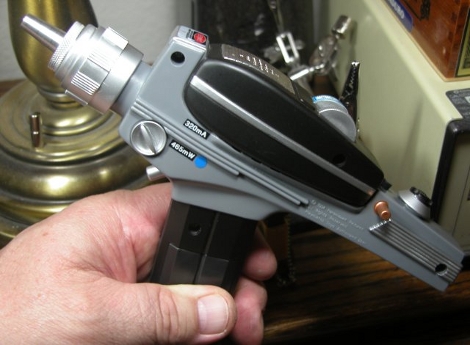
Here’s another Star Trek phaser toy with a laser added. [Jay] started with a 1994 Star Trek phaser and added a 12X Blu-Ray diode. The sound effects of the toy still work, a nice touch that you can check out in the video after the break. That video shows him popping balloons with the laser, a feat made possible by the 465 mW that it puts out when the diode is driven at 320 mA of current. He’s made a nice carrying case for the weapon but we didn’t see a spot in there for protective glasses like we’ve seen with other phaser hacks. He did make one safety consideration by adding a safety switch and indicator LED to signal when the laser diode is armed.
















